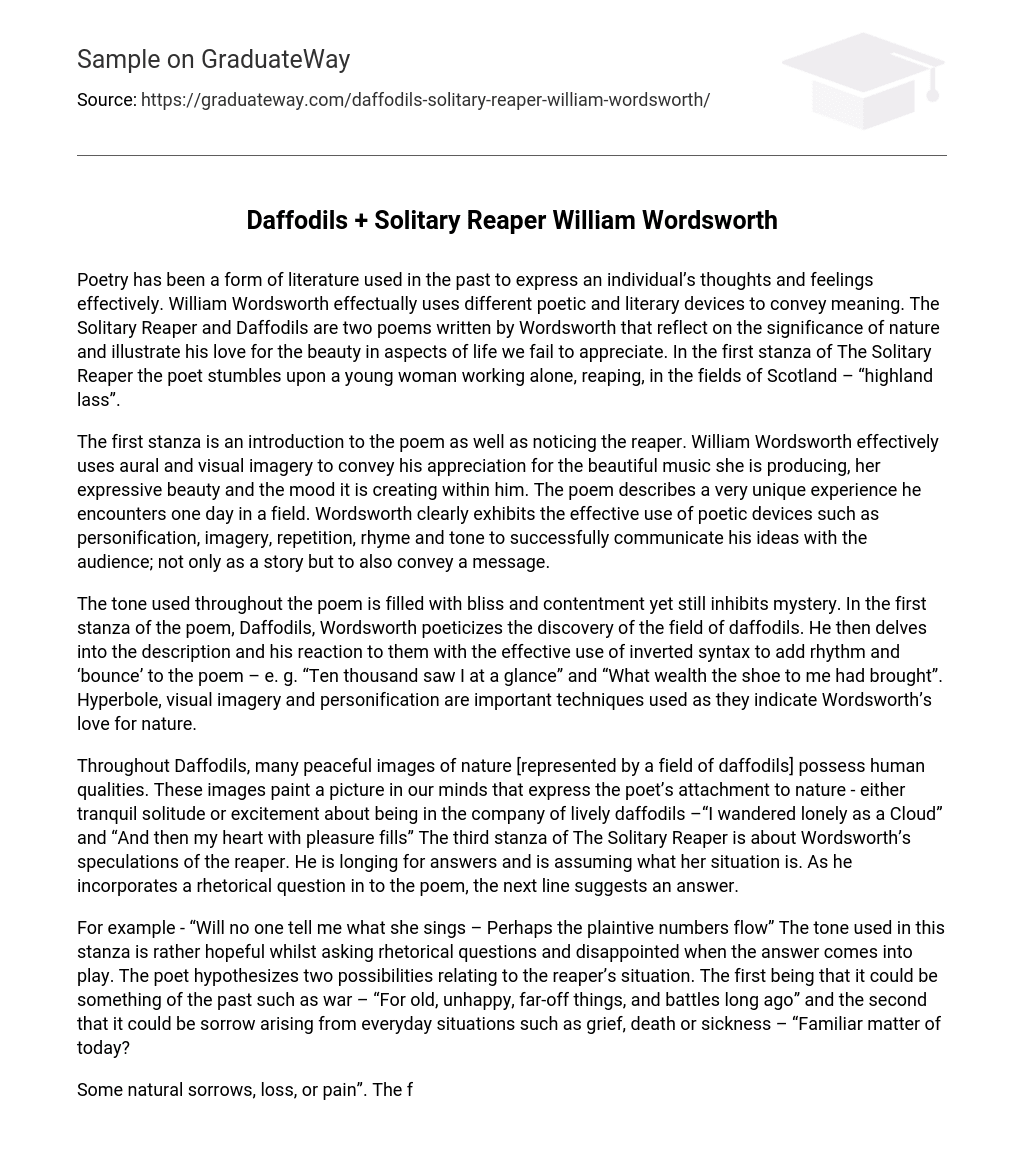Poetry has been a form of literature used in the past to express an individual’s thoughts and feelings effectively. William Wordsworth effectually uses different poetic and literary devices to convey meaning. The Solitary Reaper and Daffodils are two poems written by Wordsworth that reflect on the significance of nature and illustrate his love for the beauty in aspects of life we fail to appreciate. In the first stanza of The Solitary Reaper the poet stumbles upon a young woman working alone, reaping, in the fields of Scotland – “highland lass”.
The first stanza is an introduction to the poem as well as noticing the reaper. William Wordsworth effectively uses aural and visual imagery to convey his appreciation for the beautiful music she is producing, her expressive beauty and the mood it is creating within him. The poem describes a very unique experience he encounters one day in a field. Wordsworth clearly exhibits the effective use of poetic devices such as personification, imagery, repetition, rhyme and tone to successfully communicate his ideas with the audience; not only as a story but to also convey a message.
The tone used throughout the poem is filled with bliss and contentment yet still inhibits mystery. In the first stanza of the poem, Daffodils, Wordsworth poeticizes the discovery of the field of daffodils. He then delves into the description and his reaction to them with the effective use of inverted syntax to add rhythm and ‘bounce’ to the poem – e. g. “Ten thousand saw I at a glance” and “What wealth the shoe to me had brought”. Hyperbole, visual imagery and personification are important techniques used as they indicate Wordsworth’s love for nature.
Throughout Daffodils, many peaceful images of nature [represented by a field of daffodils] possess human qualities. These images paint a picture in our minds that express the poet’s attachment to nature – either tranquil solitude or excitement about being in the company of lively daffodils –“I wandered lonely as a Cloud” and “And then my heart with pleasure fills” The third stanza of The Solitary Reaper is about Wordsworth’s speculations of the reaper. He is longing for answers and is assuming what her situation is. As he incorporates a rhetorical question in to the poem, the next line suggests an answer.
For example – “Will no one tell me what she sings – Perhaps the plaintive numbers flow” The tone used in this stanza is rather hopeful whilst asking rhetorical questions and disappointed when the answer comes into play. The poet hypothesizes two possibilities relating to the reaper’s situation. The first being that it could be something of the past such as war – “For old, unhappy, far-off things, and battles long ago” and the second that it could be sorrow arising from everyday situations such as grief, death or sickness – “Familiar matter of today?
Some natural sorrows, loss, or pain”. The feelings conveyed in this stanza give a message to the reader that the poet would like to console the reaper and understand where her sadness is coming from. In the final stanza of The Solitary Reaper, the repetition of the first person pronoun signifies the important of the experience on the individual, the poet. It is reflecting on the importance of the reaper to poet many years later.





